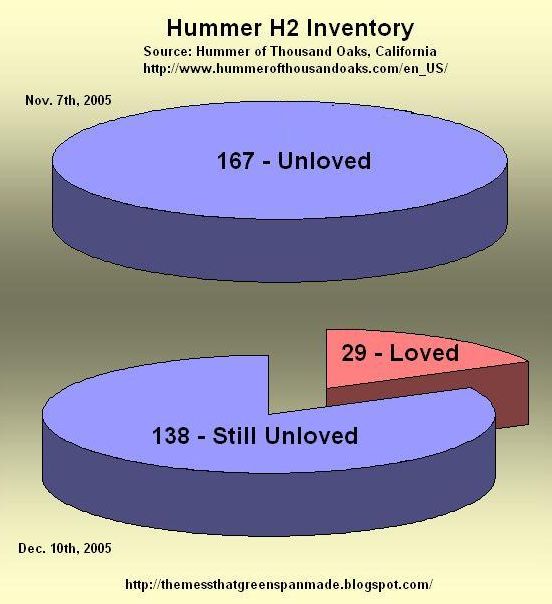This is the Hummer inventory from the Hummer of Thousand Oaks website, as of Saturday, Dec 10th, 2005. The inventory search was done using the default values New/Used: New and Make: Hummer. See the next post for how this data is used.
THE SUMMARY
H1 - 7 (all 2006)
H2 - 166 (23-2005, 143-2006)
H3 - 196 (all 2006)
THE LIST
1.....2006....OPEN...SPTUTY.50200....BLACK....$135,125
2.....2006....OPEN...SPTUTY.50202....RED......$135,125
3.....2006....H1.....SUV....50205....PEWTER...$146,523
4.....2006....H1.....SUV....50207....PEWTER...$146,523
5.....2006....H1.....SUV....50209....SAND.....$146,523
6.....2006....H1.....SUV....50210....WHITE....$146,523
7.....2006....H1.....SUV....50211....PEWTER...$146,523
8.....2005....H2.....SPTUTY.70925....BLACK.....$82,493
9.....2005....H2-SUT.SUV....71046....WHITE.....$56,489
10....2005....H2-SUT.SUV....71095....YELLOW....$59,389
11....2005....H2-SUT.SUV....71147....RED.......$58,500
12....2005....H2-SUT.SUV....71169....RED.......$53,354
13....2005....H2-SUT.SUV....71174....YELLOW....$56,330
14....2005....H2.....SPTUTY.71478....RED.......$59,470
15....2006....H3.....SUV....71492....50U.......$33,660
16....2006....H3.....SUV....71520....50U.......$34,905
17....2006....H3.....SUV....71526....31U.......$31,590
18....2006....H3.....SUV....71539....WHITE.....$35,055
19....2006....H3.....SUV....71549....YELLOW....$37,110
20....2006....H3.....SUV....71551....RED.......$29,500
21....2005....H2.....SPTUTY.71555....PEWTER....$60,280
22....2005....H2-SUT.SUV....71562....SAND......$59,010
23....2006....H3.....SUV....71575....WHITE.....$35,055
24....2005....H2.....SPTUTY.71610....PEWTER....$61,480
25....2006....H3.....SUV....71613....RED.......$37,460
26....2006....H3.....SUV....71630....RED.......$35,055
27....2006....H3.....SUV....71634....YELLOW....$37,460
28....2006....H3.....SUV....71640....YELLOW....$37,460
29....2006....H3.....SUV....71650....YELLOW....$34,730
30....2006....H3.....SUV....71654....RED.......$35,055
31....2006....H3.....SUV....71667....RED.......$37,460
32....2006....H3.....SUV....71672....RED.......$37,460
33....2006....H3.....SUV....71673....BLACK.....$38,060
34....2006....H3.....SUV....71674....BLACK.....$38,060
35....2006....H3.....SUV....71676....WHITE.....$38,060
36....2006....H3.....SUV....71677....WHITE.....$38,060
37....2006....H3.....SUV....71678....WHITE.....$38,060
38....2006....H3.....SUV....71691....METALLIC..$38,060
39....2005....H2-SUT.SUV....71703....PEWTER....$60,170
40....2006....H3.....SUV....71706....BLACK.....$38,060
41....2006....H3.....SUV....71707....RED.......$38,060
42....2006....H3.....SUV....71708....WHITE.....$38,060
43....2006....H3.....SUV....71709....WHITE.....$38,060
44....2006....H3.....SUV....71710....METALLIC..$38,060
45....2006....H3.....SUV....71711....METALLIC..$38,060
46....2006....H3.....SUV....71712....METALLIC..$38,060
47....2006....H3.....SUV....71713....METALLIC..$38,060
48....2006....H3.....SUV....71720....BLACK.....$38,060
49....2006....H2.....SPTUTY.71731....MAROON....$60,315
50....2006....H3.....SUV....71733....BLACK.....$32,235
51....2006....H2.....SPTUTY.71734....PEWTER....$60,315
52....2006....H2.....SPTUTY.71735....PEWTER....$60,315
53....2006....H2.....SPTUTY.71736....MAROON....$60,315
54....2006....H2.....SPTUTY.71737....MAROON....$60,315
55....2006....H2.....SPTUTY.71738....MAROON....$60,315
56....2006....H2.....SPTUTY.71739....MAROON....$60,315
57....2006....H2.....SPTUTY.71740....MAROON....$61,590
58....2006....H2-SUT.SUV....71754....PEWTER....$61,590
59....2006....H2.... SPTUTY.71758....BLACK.....$57,535
60....2006....H3.....SUV....71760....WHITE.....$32,490
61....2006....H3.....SUV....71762....RED.......$31,465
62....2006....H3.....SUV....71765....RED.......$31,465
63....2006....H3.....SUV....71766....RED.......$31,465
64....2006....H3.....SUV....71767....RED.......$31,465
65....2006....H3.....SUV....71769....RED.......$31,465
66....2006....H3.....SUV....71770....WHITE.....$32,490
67....2006....H3.....SUV....71772....WHITE.....$32,490
68....2006....H3.....SUV....71773....WHITE.....$32,490
69....2006....H3.....SUV....71774....WHITE.....$32,490
70....2006....H3.....SUV....71775....RED.......$31,465
71....2006....H3.....SUV....71777....RED.......$31,465
72....2006....H3.....SUV....71778....WHITE.....$32,490
73....2006....H3.....SUV....71779....WHITE.....$32,490
74....2006....H3.....SUV....71780....WHITE.....$32,490
75....2006....H3.....SUV....71781....RED.......$31,465
76....2006....H3.....SUV....71782....WHITE.....$32,490
77....2006....H3.....SUV....71783....WHITE.....$32,490
78....2006....H3.....SUV....71786....METALLIC..$37,010
79....2006....H3.....SUV....71788....METALLIC..$37,010
80....2006....H3.....SUV....71791....WHITE.....$37,610
81....2006....H3.....SUV....71792....WHITE.....$37,610
82....2006....H3.....SUV....71793....RED.......$31,465
83....2006....H3.....SUV....71794....METALLIC..$37,010
84....2006....H2.....SPTUTY.71796....BLUE......$60,665
85....2006....H2.....SPTUTY.71797....BLUE......$60,665
86....2006....H3.....SUV....71802....RED.......$37,610
87....2006....H3.....SUV....71803....WHITE.....$37,610
88....2006....H3.....SUV....71804....METALLIC..$37,610
89....2006....H3.....SUV....71805....YELLOW....$37,610
90....2006....H2-SUT.SUV....71806....BLUE......$61,190
91....2006....H3.....SUV....71807....RED.......$31,465
92....2006....H3.....SUV....71810....BLACK.....$37,610
93....2006....H3.....SUV....71811....BLUE......$37,610
94....2006....H3.....SUV....71812....RED.......$37,610
95....2006....H3.....SUV....71813....RED.......$37,610
96....2006....H3.....SUV....71817....METALLIC..$37,610
97....2006....H3.....SUV....71819....BLUE......$37,610
98....2006....H3.....SUV....71822....BLACK.....$37,010
99....2006....H3.....SUV....71823....BLACK.....$37,010
100...2006....H3.....SUV....71824....BLACK.....$37,610
101...2006....H2.....SPTUTY.71825....MAROON....$60,665
102...2006....H2.....SPTUTY.71827....MAROON....$60,665
103...2006....H2.....SPTUTY.71828....WHITE.....$60,920
10....2006....H3.....SUV....71829....BLUE......$37,610
105...2006....H3.....SUV....71832....WHITE.....$37,610
106...2006....H2.....SPTUTY.71837....WHITE.....$60,920
107...2006....H3.....SUV....71839....BLUE......$37,010
108...2006....H3.....SUV....71840....BLUE......$37,610
109...2006....H3.....SUV....71841....BLUE......$37,610
110...2006....H3.....SUV....71842....BLUE......$37,610
111...2006....H3.....SUV....71843....BLUE......$37,610
112...2006....H3.....SUV....71844....BLACK.....$37,610
113...2006....H3.....SUV....71846....WHITE.....$37,610
114...2006....H3.....SUV....71848....GREEN.....$35,075
115...2006....H3.....SUV....71849....YELLOW....$35,075
116...2006....H2.....SPTUTY.71851....BLACK.....$60,920
117...2006....H2.....SPTUTY.71852....BLACK.....$60,920
118...2006....H2.....SPTUTY.71853....BLACK.....$60,920
119...2006....H3.....SUV....71854....BLACK.....$34,270
120...2006....H3.....SUV....71855....GRAY......$34,670
121...2006....H3.....SUV....71856....BLACK.....$34,670
122...2006....H3.....SUV....71857....WHITE.....$34,945
123...2006....H2.....SPTUTY.71858....BLACK.....$59,795
124...2006....H2.....SPTUTY.71863....BLUE......$59,795
125...2006....H2.....SPTUTY.71864....BLUE......$59,795
126...2006....H2.....SPTUTY.71865....BLUE......$59,795
127...2006....H2.....SPTUTY.71868....BLACK.....$60,920
128...2006....H2.....SPTUTY.71869....BLACK.....$60,920
129...2006....H2.....SPTUTY.71870....BLACK.....$60,920
130...2006....H2.....SPTUTY.71871....WHITE.....$60,920
131...2006....H2.....SPTUTY.71872....WHITE.....$60,920
132...2006....H2.....SPTUTY.71874....BLACK.....$59,645
133...2006....H2.....SPTUTY.71875....BLACK.....$59,645
134...2006....H3.....SUV....71876....BLUE......$37,010
135...2006....H3.....SUV....71877....BLUE......$37,355
136...2006....H3.....SUV....71879....BLUE......$37,610
137...2006....H3.....SUV....71880....BLACK.....$35,075
138...2006....H3.....SUV....71881....BLACK.....$35,075
139...2006....H2.....SPTUTY.71882....BLACK.....$60,920
140...2006....H3.....SUV....71885....BLACK.....$34,670
141...2006....H3.....SUV....71887....GRAY......$34,670
142...2006....H3.....SUV....71888....YELLOW....$33,875
143...2006....H2.....SPTUTY.71889....BLACK.....$60,920
144...2006....H3.....SUV....71890....BLUE......$37,010
145...2006....H3.....SUV....71892....RED.......$35,075
146...2006....H3.....SUV....71893....GRAY......$34,670
147...2006....H3.....SUV....71894....BLACK.....$34,670
148...2006....H3.....SUV....71895....BLUE......$34,670
149...2006....H3.....SUV....71896....RED.......$33,605
150...2006....H3.....SUV....71897....RED.......$33,230
151...2006....H2.....SPTUTY.71902....BLACK.....$60,920
152...2006....H2.....SPTUTY.71907....YELLOW....$62,095
153...2006....H2-SUT.SUV....71909....BLUE......$61,190
154...2006....H3.....SUV....71911....BLUE......$33,030
155...2006....H2.....SPTUTY.71912....BLACK.....$60,935
156...2006....H2.....SPTUTY.71913....BLACK.....$60,935
157...2006....H2.....SPTUTY.71916....BLACK.....$59,795
158...2006....H2.....SPTUTY.71940....WHITE.....$60,935
159...2006....H2.....SPTUTY.71942....BLUE......$59,795
160...2006....H2.....SPTUTY.71945....MAROON....$62,615
161...2005....H2-SUT.SUV....71947....SAND......$59,160
162...2006....H3.....SUV....71951....BLUE......$36,960
163...2006....H2-SUT.SUV....71953....BLUE......$61,190
164...2006....H3.....SUV....71954....GRAY......$34,670
165...2006....H3.....SUV....71955....WHITE.....$34,170
166...2006....H2.....SPTUTY.71957....BLUE......$62,615
167...2006....H2.....SPTUTY.71958....BLUE......$62,615
168...2006....H2.....SPTUTY.71961....BLACK.....$62,615
169...2006....H2.....SPTUTY.71962....WHITE.....$62,615
170...2006....H2.....SPTUTY.71963....SAND......$62,615
171...2006....H3.....SUV....71974....GRAY......$37,405
172...2006....H3.....SUV....71976....RED.......$37,405
173...2006....H3.....SUV....71977....RED.......$37,405
174...2006....H3.....SUV....71984....BLUE......$37,010
175...2006....H3.....SUV....71985....GRAY......$34,170
176...2006....H3.....SUV....71991....BLACK.....$36,195
177...2006....H3.....SUV....71992....BLUE......$36,195
178...2006....H3.....SUV....71993....BLUE......$35,370
179...2006....H3.....SUV....71995....BLUE......$35,795
180...2006....H3.....SUV....71996....BLUE......$35,795
181...2006....H3.....SUV....71997....BLUE......$35,795
182...2006....H3.....SUV....71998....BLACK.....$35,595
183...2006....H3.....SUV....71999....BLACK.....$35,595
184...2006....H3.....SUV....72000....BLACK.....$35,595
185...2006....H3.....SUV....72001....BLACK.....$35,195
186...2006....H3.....SUV....72004....GRAY......$35,595
187...2006....H3.....SUV....72005....GRAY......$35,595
188...2006....H2.....SPTUTY.72006....MAROON....$62,615
189...2006....H2.....SPTUTY.72009....BLACK.....$62,615
190...2006....H3.....SUV....72012....BLACK.....$35,595
191...2006....H3.....SUV....72014....WHITE.....$37,405
192...2006....H3.....SUV....72016....RED.......$37,405
193...2006....H2-SUT.SUV....72026....BLACK.....$60,470
194...2006....H2.....SPTUTY.72028....PEWTER....$59,795
195...2006....H2.....SPTUTY.72030....PEWTER....$59,795
196...2006....H2.....SPTUTY.72031....BLUE......$59,795
197...2006....H2.....SPTUTY.72032....BLUE......$59,795
198...2006....H2.....SPTUTY.72033....BLUE......$59,795
199...2006....H2.....SPTUTY.72037....SAND......$59,795
200...2006....H2.....SPTUTY.72038....SAND......$59,795
201...2006....H3.....SUV....72040....BLACK.....$38,260
202...2006....H2.....SPTUTY.72041....BLACK.....$61,215
203...2006....H3......SUV....72044....WHITE....$38,930
204...2006....H3.....SUV....72045....BLACK.....$35,095
205...2006....H2.....SPTUTY.72047....MAROON....$59,795
206...2006....H3.....SUV....72050....BLACK.....$38,260
207...2006....H3.....SUV....72052....BLUE......$33,300
208...2006....H3.....SUV....72053....GRAY......$33,695
209...2006....H3.....SUV....72054....GRAY......$34,290
210...2006....H3.....SUV....72055....GRAY......$35,465
211...2006....H3.....SUV....72056....BLACK.....$35,965
212...2006....H3.....SUV....72057....BLACK.....$35,965
213...2006....H3.....SUV....72058....BLACK.....$35,965
214...2006....H3.....SUV....72060....WHITE.....$34,870
215...2006....H3.....SUV....72061....WHITE.....$38,850
216...2006....H3.....SUV....72062....WHITE.....$38,850
217...2006....H3.....SUV....72063....BLUE......$38,850
218...2006....H3.....SUV....72064....WHITE.....$33,970
219...2006....H3.....SUV....72065....RED.......$33,550
220...2006....H3.....SUV....72067....WHITE.....$39,450
221...2006....H3.....SUV....72068....WHITE.....$38,930
222...2006....H3.....SUV....72069....YELLOW....$38,700
223...2006....H3.....SUV....72074....GRAY......$38,330
224...2006....H2.....SPTUTY.72077....SAND......$62,615
225...2006....H3.....SUV....72081....YELLOW....$37,580
226...2006....H2-SUT.SUV....72082....BLACK.....$59,520
227...2006....H2-SUT.SUV....72083....WHITE.....$60,470
228...2006....H2-SUT.SUV....72084....MAROON....$60,470
229...2006....H2-SUT.SUV....72085....SAND......$59,520
230...2006....H2-SUT.SUV....72086....WHITE.....$59,890
231...2006....H2.....SPTUTY.72087....SAND......$59,795
232...2006....H2.....SPTUTY.72088....BLACK.....$59,795
233...2006....H2.....SPTUTY.72089....BLACK.....$59,795
234...2006....H2.....SPTUTY.72090....BLACK.....$59,795
235...2006....H2.....SPTUTY.72091....MAROON....$59,795
236...2006....H2-SUT.SUV....72092....BLACK.....$57,650
237...2006....H3.....SUV....72095....BLACK.....$36,460
238...2006....H3.....SUV....72101....BLUE......$38,180
239...2006....H3.....SUV....72102....BLUE......$38,455
240...2006....H3.....SUV....72105....YELLOW....$38,850
241...2006....H3.....SUV....72106....BLUE......$38,850
242...2006....H2.....SPTUTY.72109....BLACK.....$59,645
243...2006....H2.....SPTUTY.72110....BLACK.....$61,070
244...2006....H2.....SPTUTY.72113....BLACK.....$68,130
245...2006....H2.....SPTUTY.72114....BLACK.....$59,645
246...2006....H2.....SPTUTY.72115....WHITE.....$59,645
247...2006....H3.....SUV....72116....BLACK.....$38,460
248...2006....H2.....SPTUTY.72117....BLACK.....$59,645
249...2006....H2.....SPTUTY.72118....PEWTER....$61,070
250...2006....H2.....SPTUTY.72119....SAND......$59,645
251...2006....H2.....SPTUTY.72120....BLUE......$61,070
252...2006....H2.....SPTUTY.72122....BLACK.....$59,645
253...2006....H2.....SPTUTY.72123....WHITE.....$59,645
254...2006....H3.....SUV....72124....BLACK.....$35,375
255...2006....H3.....SUV....72125....BLACK.....$35,375
256...2006....H3.....SUV....72126....BLACK.....$35,375
257...2006....H3.....SUV....72129....GRAY......$38,180
258...2006....H3.....SUV....72130....GRAY......$38,780
259...2006....H2.....SPTUTY.72131....BLACK.....$63,783
260...2006....H2.....SPTUTY.72132....BLUE......$66,530
261...2006....H3.....SUV....72134....BLACK.....$37,510
262...2006....H3.....SUV....72136....BLACK.....$38,460
263...2006....H3.....SUV....72137....BLACK.....$38,460
264...2006....H2.....SPTUTY.72138....BLACK.....$59,645
265...2006....H2-SUT.SUV....72139....PEWTER....$60,240
266...2006....H2-SUT.SUV....72140....YELLOW....$57,800
267...2006....H2-SUT.SUV....72142....WHITE.....$60,240
268...2006....H2-SUT.SUV....72143....PEWTER....$60,240
269...2006....H2.....SPTUTY.72144....BLACK.....$60,920
270...2006....H2.....SPTUTY.72145....BLACK.....$60,920
271...2006....H2.....SPTUTY.72146....WHITE.....$60,920
272...2006....H3.....SUV....72148....GRAY......$38,850
273...2006....H3.....SUV....72149....BLUE......$38,850
274...2006....H3.....SUV....72150....BLUE......$38,130
275...2006....H3.....SUV....72152....BLUE......$38,130
276...2006....H3.....SUV....72153....BLUE......$38,130
277...2006....H3.....SUV....72154....BLACK.....$38,180
278...2006....H3.....SUV....72155....GRAY......$39,730
279...2006....H2.....SPTUTY.72156....BLUE......$66,530
280...2006....H3.....SUV....72157....BLACK.....$37,510
281...2006....H2-SUT.SUV....72158....BLACK.....$59,945
282...2006....H2-SUT.SUV....72159....BLACK.....$60,240
283...2006....H2.....SPTUTY.72160....BLACK.....$60,920
284...2006....H2.....SPTUTY.72161....BLACK.....$60,920
285...2006....H2.....SPTUTY.72162....BLACK.....$59,645
286...2006....H2.....SPTUTY.72163....BLACK.....$59,645
287...2006....H2.....SPTUTY.72164....WHITE.....$60,920
288...2006....H3.....SUV....72165....WHITE.....$38,850
289...2006....H3.....SUV....72169....YELLOW....$38,700
290...2006....H3.....SUV....72170....YELLOW....$37,675
291...2006....H3.....SUV....72171....YELLOW....$37,675
292...2006....H3.....SUV....72173....RED.......$37,005
293...2006....H3.....SUV....72174....BLACK.....$37,675
294...2006....H3.....SUV....72176....GRAY......$29,500
295...2006....H2.....SPTUTY.72178....WHITE.....$59,645
296...2006....H2-SUT.SUV....72179....SAND......$60,240
297...2006....H2-SUT.SUV....72180....WHITE.....$60,240
298...2006....H2-SUT.SUV....72181....BLACK.....$60,240
299...2006....H2.....SPTUTY.72182....BLACK.....$68,130
300...2006....H2.....SPTUTY.72183....YELLOW....$61,070
301...2006....H2.....SPTUTY.72184....BLUE......$59,645
302...2006....H2.....SPTUTY.72185....SAND......$59,645
303...2006....H2.....SPTUTY.72187....BLUE......$59,645
304...2006....H2.....SPTUTY.72188....MAROON....$59,645
305...2006....H2.....SPTUTY.72189....SAND......$61,070
306...2006....H2.....SPTUTY.72191....BLUE......$61,070
307...2006....H2.....SPTUTY.72192....WHITE.....$68,130
308...2006....H2.....SPTUTY.72193....BLACK.....$60,920
309...2006....H2.....SPTUTY.72194....WHITE.....$59,261
310...2006....H2-SUT.SUV....72195....BLACK.....$58,670
311...2006....H3.....SUV....72197....YELLOW....$38,850
312...2006....H3.....SUV....72198....BLACK.....$37,675
313...2006....H3.....SUV....72199....BLUE......$37,675
314...2006....H3.....SUV....72200....WHITE.....$37,675
315...2006....H3.....SUV....72201....WHITE.....$37,005
316...2006....H3.....SUV....72202....RED.......$37,005
317...2006....H2-SUT.SUV....72203....BLUE......$57,650
318...2006....H3.....SUV....72204....BLACK.....$37,510
319...2006....H3.....SUV....72205....BLACK.....$37,510
320...2006....H2.....SPTUTY.72206....PEWTER....$59,645
321...2006....H2.....SPTUTY.72207....WHITE.....$59,645
322...2006....H2.....SPTUTY.72208....PEWTER....$61,070
323...2006....H2.....SPTUTY.72211....BLACK.....$68,130
324...2006....H2.....SPTUTY.72212....BLACK.....$59,645
325...2006....H2.....SPTUTY.72213....BLACK.....$59,645
326...2006....H2.....SPTUTY.72214....WHITE.....$59,645
327...2006....H2.....SPTUTY.72215....WHITE.....$59,645
328...2006....H2.....SPTUTY.72216....BLACK.....$59,645
329...2006....H2.....SPTUTY.72217....WHITE.....$54,055
330...2006....H3.....SUV....72218....BLACK.....$38,135
331...2006....H3.....SUV....72220....GRAY......$33,300
332...2006....H2.....SPTUTY.72221....BLACK.....$59,645
333...2006....H2.....SPTUTY.72222....WHITE.....$59,645
334...2006....H2-SUT.SUV....72223....BLUE......$54,360
335...2006....H2.....SPTUTY.72224....BLACK.....$54,055
336...2006....H3.....SUV....72225....BLUE......$39,055
337...2006....H3.....SUV....72227....BLACK.....$38,460
338...2006....H2.....SPTUTY.72229....WHITE.....$54,055
339...2006....H2.....SPTUTY.72230....BLACK.....$68,130
340...2006....H2-SUT.SUV....72231....PEWTER....$56,580
341...2006....H3.....SUV....72236....GRAY......$37,675
342...2006....H3.....SUV....72237....RED.......$37,675
343...2006....H3.....SUV....72238....WHITE.....$33,300
344...2006....H3.....SUV....72239....BLUE......$33,300
345...2006....H3.....SUV....72240....BLACK.....$37,675
346...2006....H3.....SUV....72241....BLACK.....$38,460
347...2006....H2.....SPTUTY.72242....WHITE.....$54,055
348...2006....H2.....SPTUTY.72243....BLACK.....$68,130
349...2006....H2.....SPTUTY.72248....BLACK.....$57,535
350...2006....H2.....SPTUTY.72250....PEWTER....$58,095
351...2006....H2.....SPTUTY.72251....YELLOW....$58,095
352...2006....H2.....SPTUTY.72252....BLACK.....$54,355
353...2005....H2-SUT.SUV....U71176...WHITE.....$53,204
354...2006....H3.....SUV....U71764...RED.......$31,465
355...2005....H2-SUT.SUV....D71479...PEWTER....$59,595
356...2005....H2-SUT.SUV....D71921...GRAY......$62,518
357...2005....H2.....SPTUTY.D71928...GRAY......$60,935
358...2005....H2-SUT.SUV....D71929...GRAY......$59,160
359...2005....H2-SUT.SUV....D71930...PEWTER....$58,165
360...2006....H3.....SUV....D71931...YELLOW....$35,525
361...2005....H2.....SPTUTY.D71933...GRAY......$61,635
362...2005....H2-SUT.SUV....D71934...BLACK.....$60,435
363...2005....H2-SUT.SUV....D71935...WHITE.....$59,985
364...2005....H2-SUT.SUV....D71936...BLACK.....$59,735
365...2005....H2.....SPTUTY.D71938...YELLOW....$58,185
366...2006....H3.....SUV....D72196...RED.......$35,305
367...2006....H2.....SPTUTY.D72232...YELLOW....$57,980
368...2006....H2.....SPTUTY.D72233...PEWTER....$57,225
369...2006....H3.....SUV....D72235...BLUE......$37,055
Read more...












 To the left is the yield curve as of March of 2003, around the time that U.S. equity markets hit their lows for the decade. Economic growth, as measured by real GDP, had gone negative for a few quarters in 2001 and 2002, and heading into 2003 was uncomfortably in the two percent range.
To the left is the yield curve as of March of 2003, around the time that U.S. equity markets hit their lows for the decade. Economic growth, as measured by real GDP, had gone negative for a few quarters in 2001 and 2002, and heading into 2003 was uncomfortably in the two percent range.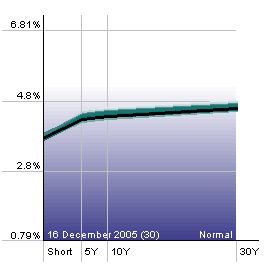
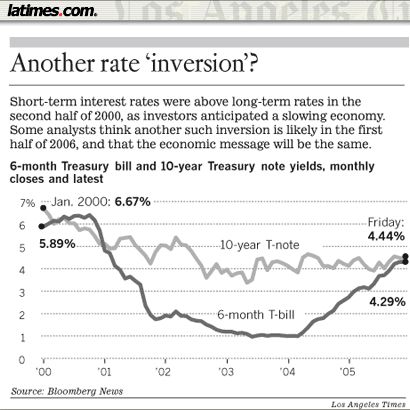
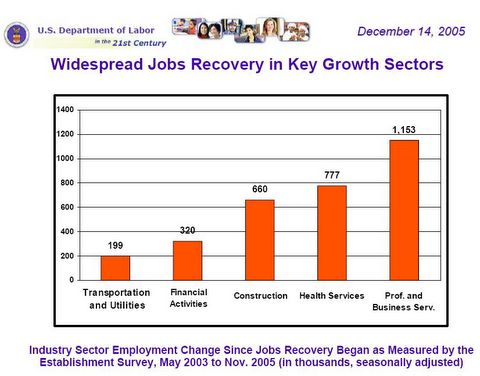
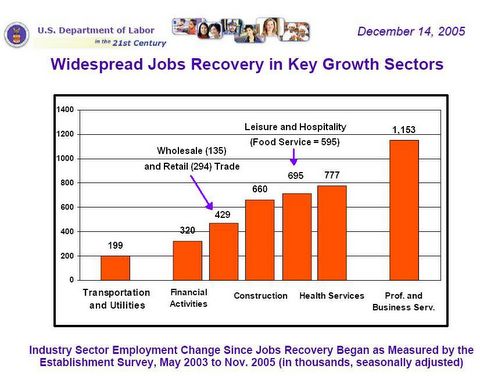

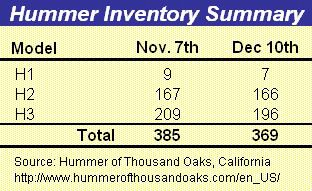 The overall count is shown in the table to the left. In and of itself these numbers are mostly uninteresting - a net decrease of 16 Hummers during this time, so what?
The overall count is shown in the table to the left. In and of itself these numbers are mostly uninteresting - a net decrease of 16 Hummers during this time, so what?